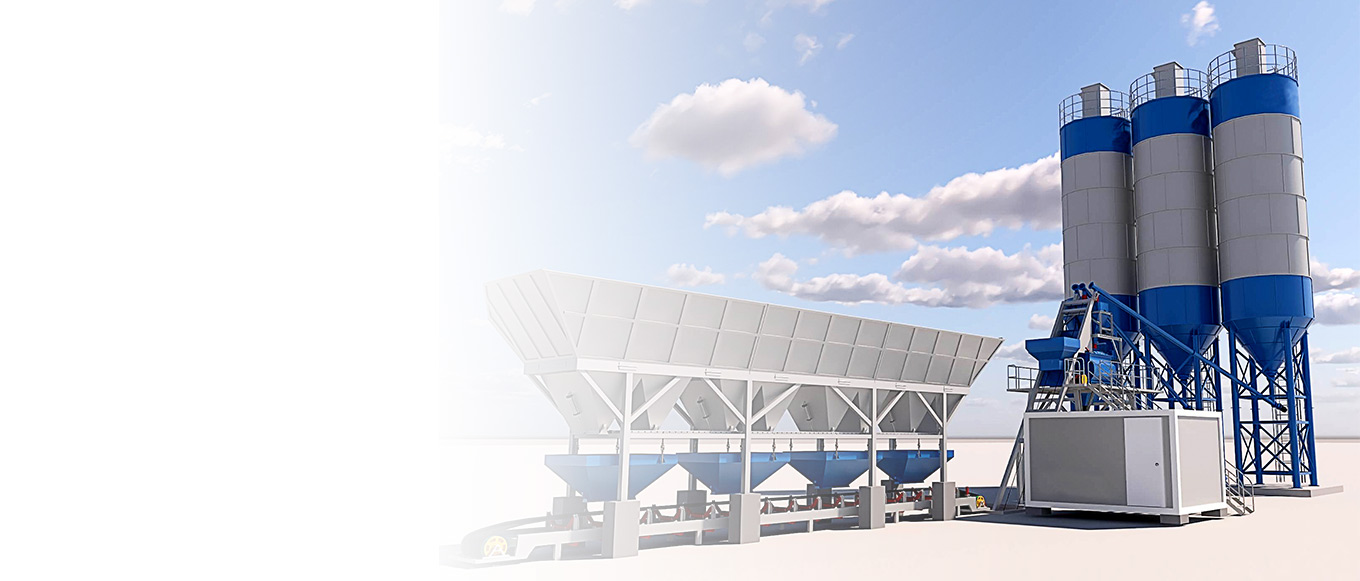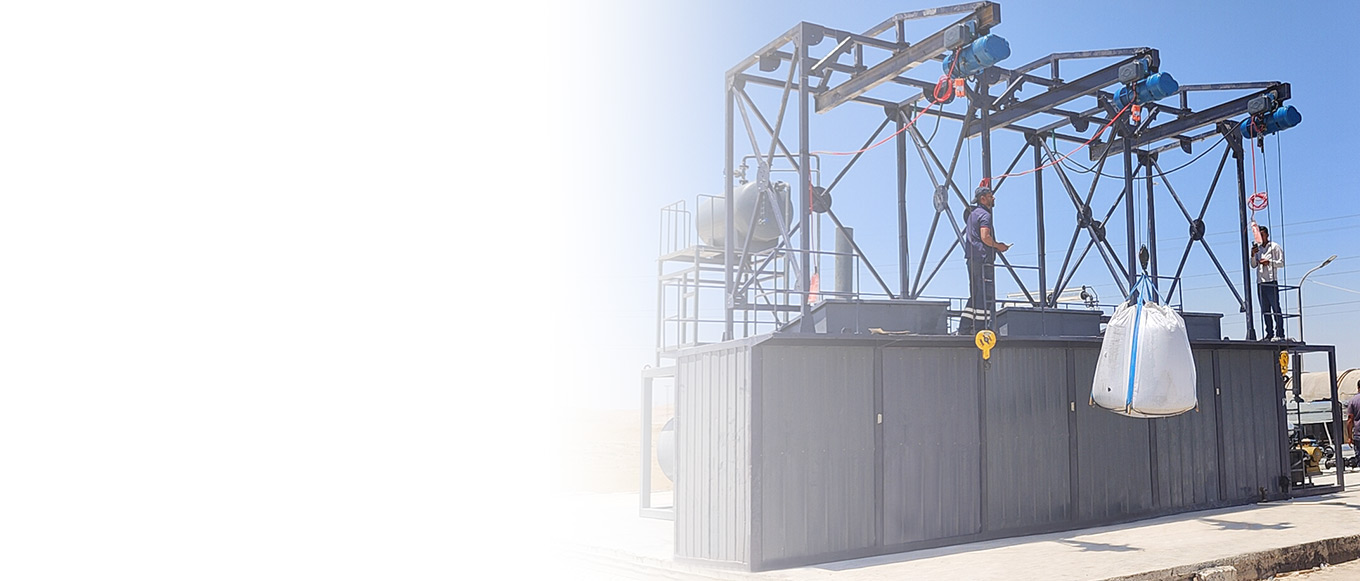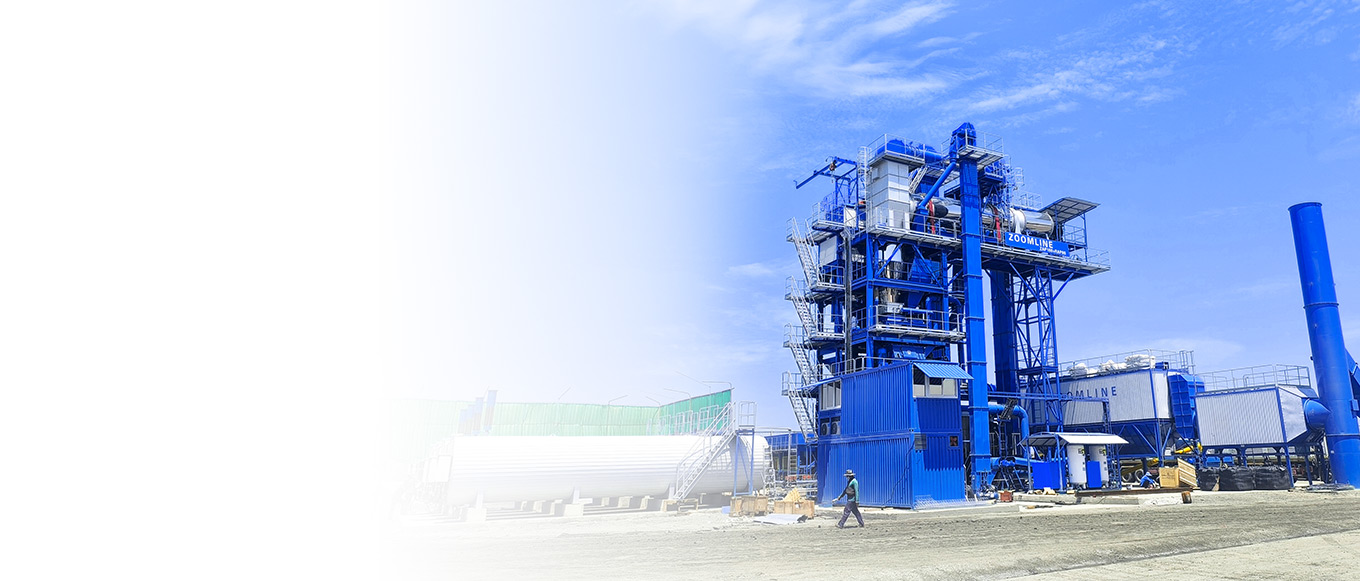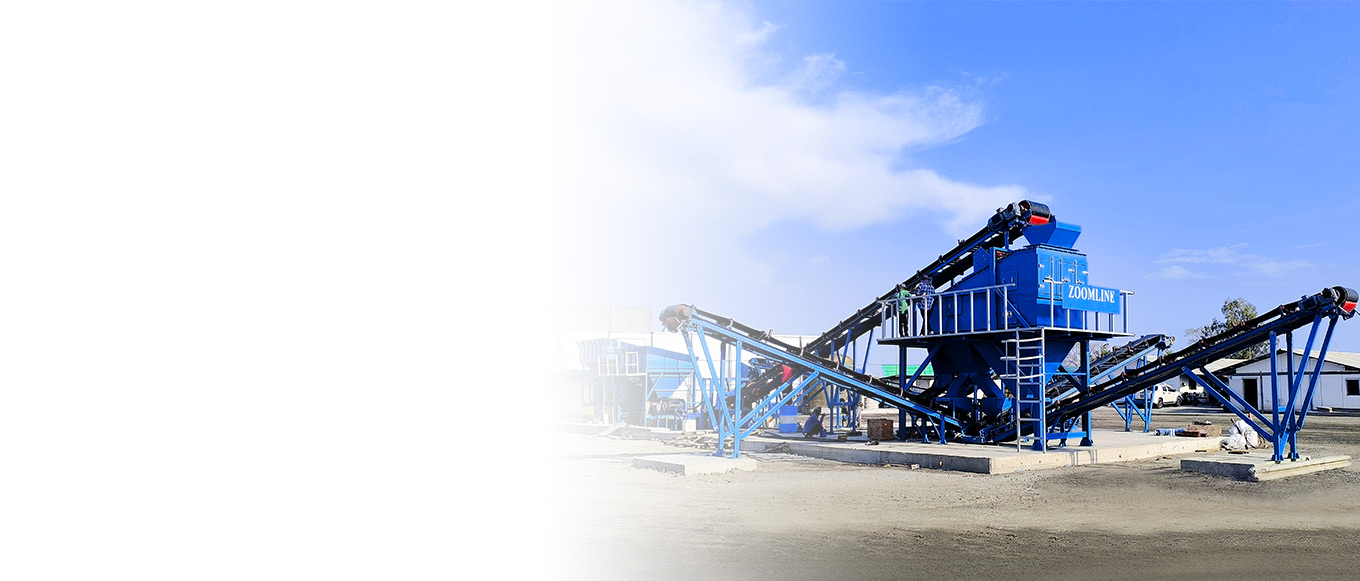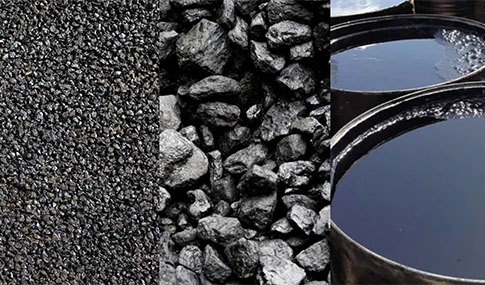In road maintenance and construction projects, the selection of asphalt materials is a critical factor in determining engineering quality and construction efficiency. Whether addressing structural damage to roads during winter, conducting localized pavement repair work, or implementing large-scale road repaving projects, the appropriate selection of asphalt types holds significant importance. Cold-mixed asphalt mixtures and hot-mixed asphalt mixtures are the two primary material forms used in road engineering, exhibiting significant differences in material properties, construction processes, and applicable scenarios. A thorough understanding of their technical characteristics provides important guidance for optimizing construction plans and ensuring project quality.
What is Cold Asphalt
Cold-mixed asphalt, as an important member of the basic asphalt types, is a commonly used material in road repair and small-scale patching scenarios. Its primary advantage lies in its convenience—without the need for complex heating processes, bagged cold asphalt can be directly filled into road potholes or cracks to quickly form a protective layer, effectively preventing further deterioration of road damage.
Compared to hot-mixed asphalt, cold asphalt is slightly inferior in terms of strength, but its cost-effective price advantage is significant. Additionally, under extreme weather conditions such as high temperatures or severe cold, where hot-mixed asphalt is unsuitable, cold asphalt, with its temperature-independent characteristics, becomes an excellent solution for temporary road repairs.
When is Cold Asphalt Used
In low-temperature environments, cold asphalt, with its no-heating requirement and convenient construction, is the preferred choice for winter road repairs. I will refine the wording and add details to make this section clearer and more professional:
Cold asphalt is an ideal temporary solution for repairing potholes on asphalt roads during cold winters. Its unique advantage lies in its ability to maintain good performance even in low-temperature conditions, enabling rapid repairs. The construction process is extremely simple, requiring no heating treatment and allowing direct application to the road surface. In most repair scenarios, no large equipment, such as rollers, is needed; construction personnel can efficiently complete repairs by directly filling the potholes with cold asphalt.
Advantages of Cold Asphalt
Cost-effectiveness: Cold-mixed asphalt offers significant cost advantages. Compared to hot-mixed asphalt, its production process does not require expensive specialized heating equipment or consume large amounts of fuel for high-temperature processing, resulting in a substantial reduction in material costs. According to industry data, in small-scale repairs and temporary repair projects, using cold-mixed asphalt can save approximately 30%-40% in material costs. Additionally, since the construction equipment requirements are simple, this further reduces equipment rental and maintenance costs, making it an economically efficient choice for projects with limited budgets.
Ease of Use: Cold-mixed asphalt significantly lowers the construction threshold, with a simple and intuitive operation process that does not require professional technical guidance or extensive training for operators. Ordinary construction workers only need to master basic tool usage methods and construction knowledge to carry out the work smoothly. Taking the common example of repairing road surface potholes, construction workers only need to pour cold-mixed asphalt into the pothole, use simple compaction tools to compact it, and the repair is complete. The entire process does not require complex construction techniques or specialized equipment, effectively reducing labor and time costs.
Multifunctionality: Cold-mixed asphalt exhibits excellent environmental adaptability, capable of normal use within a wide temperature range of -10°C to 40°C, making it particularly suitable for road repairs in winter or other low-temperature environments. Unlike hot-mixed asphalt, which hardens and becomes difficult to spread at low temperatures, cold-mixed asphalt maintains good plasticity and adhesion, enabling it to be used for road repairs at any time. Additionally, its unique chemical formulation provides excellent storage stability, allowing it to be stored for extended periods without hardening under sealed conditions, with a storage life of up to 6–12 months. This feature enables construction companies to pre-stock materials, flexibly address various sudden road damage situations, and truly achieve year-round road maintenance operations.
What is Hot Asphalt
Hot mix asphalt (HMA) is based on aggregates such as sand and gravel, mixed with asphalt binder in precise proportions, and requires high-temperature heating before construction. Typically, in specialized production facilities, the asphalt mixture is heated to 149–260°C (300–500°F) to achieve good flowability and plasticity, then rapidly transported to the construction site for paving.
With its excellent compaction performance and durability, hot-mixed asphalt is widely used in large-scale pavement projects such as roads, parking lots, and driveways, making it a common choice for municipal infrastructure and transportation engineering.
When is Hot Asphalt Used
Hot asphalt dominates the road construction sector due to its superior bonding properties and durability, and is widely applied in large-scale projects such as road overlay, driveway paving, and large-scale parking lot construction. Such construction projects typically cover areas of tens of thousands of square meters or larger, necessitating extremely high standards for construction techniques and processes. During actual operations, heavy machinery such as milling machines, pavers, and rollers must work in coordination: first, a milling machine is used to mill the old pavement surface, removing damaged or aged layers; then the paver precisely controls the thickness and speed to uniformly spread the hot asphalt heated to 150-180°C; finally, the roller compacts the surface multiple times to ensure the asphalt and aggregate are fully integrated, forming a dense and smooth pavement structure. Hot asphalt construction not only requires specialized equipment but also demands that construction personnel possess extensive operational experience to control critical parameters such as temperature and paving speed, thereby ensuring engineering quality. For this reason, hot asphalt construction has become the construction method most closely associated with asphalt pavement maintenance in public perception, with its construction outcomes directly impacting road service life and driving comfort.
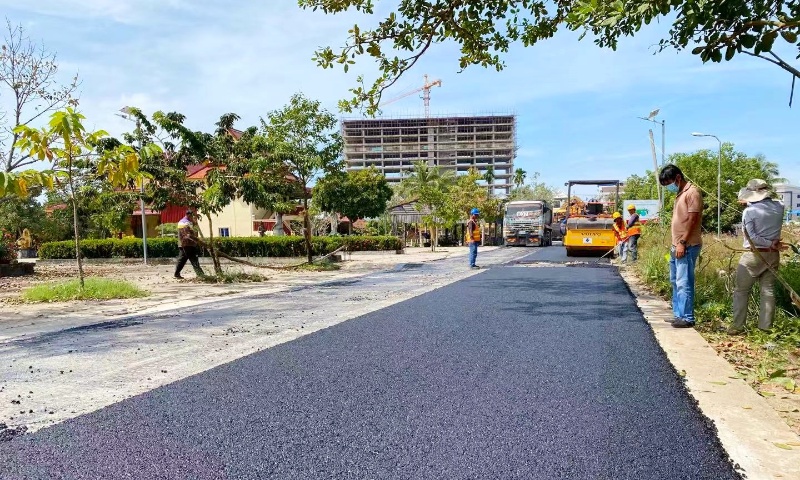
Advantages of Hot Asphalt
Hot-mixed asphalt (HMA) is the preferred material for many paving projects due to its exceptional durability, performance, and service life. It is ideal for constructing roads, highways, and airport runways, providing a reliable solution for withstanding heavy traffic and harsh weather conditions. This section will delve into the inherent advantages of hot-mixed asphalt, explaining why it is the preferred material for infrastructure projects requiring high-quality, durable paving solutions.
Enhanced Durability
One of the most notable advantages of hot mix asphalt lies in its exceptional durability. Through rigorous screening and mixing of aggregate gradation, coupled with precise temperature control during the mixing and paving process, hot mix asphalt forms a dense and uniform structure that effectively resists deformation, cracking, and rutting caused by heavy traffic loads, significantly extending the service life of the pavement.
Strong adaptability to extreme environments: Even under extreme conditions such as high temperatures, low-temperature freeze-thaw cycles, prolonged rain erosion, or UV radiation, hot-mix asphalt maintains its structural integrity, making it the preferred material for road construction in regions with complex climatic conditions.
Outstanding load-bearing performance: With its superior load-bearing capacity, hot-mix asphalt effectively distributes vehicle loads, preventing premature road damage and providing a durable, safe, and smooth driving surface.
Superior Performance
Hot-mixed asphalt not only provides a durable road structure but also forms a seamless, smooth surface after construction, significantly enhancing driving comfort and safety. The smooth and even road texture effectively reduces rolling resistance during vehicle operation, not only improving fuel efficiency but also significantly reducing road noise, bringing dual optimizations to the urban traffic environment.
Efficient construction and rapid traffic resumption: Hot-mixed asphalt, with its rapid cooling and solidification properties, allows roads to reopen to traffic shortly after paving, significantly reducing the impact of construction on traffic flow.
Visual and functional customization: Hot-mixed asphalt can be flexibly adjusted to produce diverse textures and colors according to project requirements, meeting both landscape design needs and functional demands, achieving a perfect balance of aesthetics and practicality.
Economic Benefits
Although hot-mix asphalt has higher initial costs during production and installation, its long-term economic benefits are highly significant. With its excellent durability, hot-mix asphalt significantly reduces the frequency of road maintenance and repairs, enabling both government public works and private commercial projects to save substantial long-term expenses.
Significant long-term cost advantages: Hot-mix asphalt pavements have an exceptionally long service life, resulting in significantly reduced lifecycle costs, making them a highly cost-effective choice for large-scale infrastructure projects.
Outstanding energy-saving and environmental benefits: The smooth and even surface of hot-mix asphalt pavements effectively reduces fuel consumption during vehicle operation, lowering carbon emissions and aligning with current green sustainable development principles.
Environmental Considerations
The asphalt industry is actively exploring green transformation pathways and has achieved notable results in reducing the environmental impact of hot-mix asphalt production. This technology lowers asphalt production temperatures by 20–40°C, ensuring the road performance of the final product while reducing fuel consumption by 10–20% and carbon dioxide emissions by 15–25%, effectively alleviating the energy consumption and carbon emissions pressures associated with traditional processes.
Significant recyclability advantages: Hot-mix asphalt, with a recycling rate as high as 95%, serves as a model for practicing green building principles. Through processes such as crushing and screening, old asphalt mixtures can be reused as aggregate in new asphalt mixes, reducing reliance on natural sand and gravel extraction while lowering the pressure on solid waste landfills, thereby creating a virtuous cycle of efficient resource utilization.
The advantages of hot-mix asphalt extend far beyond its immediate performance and aesthetic appeal. Its durability, cost-effectiveness, and environmental benefits make it an ideal paving material for projects requiring long-lasting, high-quality road surfaces. As asphalt technology continues to advance and commitments to sustainability grow, hot-mix asphalt continues to set standards for infrastructure construction, providing reliable and efficient solutions for today’s construction challenges. By prioritizing the use of hot-mix asphalt in suitable projects, stakeholders can achieve outcomes that withstand the test of time, traffic, and environmental conditions.
Key Differences Between Cold Asphalt and Hot Asphalt
In paving projects, the choice between hot mix asphalt (HMA) and cold mix asphalt (CMA) is a critical decision influenced by factors such as climate, project scale, and budget. Understanding the fundamental differences between these two asphalt mixtures is essential for selecting the most suitable material for specific paving requirements. This section will outline their main differences in terms of composition, application, performance, and cost-effectiveness, providing a clear comparison to assist in making informed decisions.
Composition
Hot-mixed asphalt: The preparation process for hot-mixed asphalt requires precise temperature control. First, the asphalt binder is heated to 300°F to 350°F to reduce its viscosity through high temperatures; simultaneously, the aggregate is heated to completely remove internal moisture. Under high temperatures, the asphalt mixture fully encapsulates the aggregate, ensuring optimal workability for construction and achieving high-quality compaction results, thereby laying a solid foundation for subsequent performance.
Cold-mixed asphalt: Unlike hot-mixed asphalt, cold-mixed asphalt employs a completely different production method. Under ambient temperature conditions, asphalt emulsion or diluted asphalt is used as the binder to uniformly coat the aggregate without the need for high temperatures. Cold-mixed asphalt can be mixed on-site as needed or produced centrally at a batching plant. Once manufactured, it can be used immediately or stored for later use, significantly enhancing construction flexibility and convenience.
Application Conditions
Hot-mixed asphalt application: Hot-mixed asphalt requires paving and compaction at high temperatures to ensure excellent adhesion and compaction. This asphalt material is particularly suitable for new construction projects, large-scale road maintenance projects, and areas with high traffic volume and load requirements. However, hot-mix asphalt construction has strict equipment requirements and necessitates specialized transportation and paving equipment to complete the construction process.
Cold-mix asphalt applications: Cold-mix asphalt, with its highly flexible construction characteristics, can be used under a wider range of temperature and weather conditions, unaffected by extreme cold or heat. As a result, cold-mixed asphalt is the go-to choice for emergency road repairs, small-scale pavement projects, and scenarios where hot-mixed asphalt is impractical. During construction, cold-mixed asphalt can be directly poured from storage containers to the repair site without relying on complex specialized equipment, significantly lowering construction barriers and costs.
Performance
Durability of hot-mixed asphalt: Hot-mixed asphalt stands out for its exceptional durability, capable of withstanding the dual challenges of heavy traffic and extreme weather conditions, making it an ideal choice for long-term infrastructure projects. Its superior bonding properties ensure a seamless, smooth road surface, providing a comfortable and stable driving experience while significantly extending the road’s service life.
Performance of Cold-Mix Asphalt: Cold-mix asphalt demonstrates high flexibility and convenience in emergency road repairs, quickly filling potholes and restoring road traffic. However, when faced with long-term erosion from heavy traffic and harsh weather conditions, its durability is significantly inferior to that of hot-mix asphalt. Therefore, cold-mix asphalt is primarily used for temporary repairs or in areas with low traffic volume. It is worth noting that sections repaired with cold-mixed asphalt often require permanent repairs using hot-mixed asphalt in the future to ensure road quality and service life.
Cost-effectiveness
Initial and Long-Term Costs of Hot-Mixed Asphalt: Hot-mixed asphalt requires high-temperature heating during production and strict insulation conditions for transportation, resulting in significantly higher initial procurement and transportation costs compared to cold-mixed asphalt. However, due to its excellent density and stability, the paved road surface has an exceptionally long service life, significantly reducing the frequency of maintenance. From a lifecycle cost perspective, hot-mixed asphalt offers better cost-effectiveness and is suitable for large-scale projects such as main roads and highways that require high durability.
Economic Advantages of Cold-Mixed Asphalt: Cold-mixed asphalt can be applied without high-temperature heating, resulting in lower equipment investment and energy costs, which significantly reduces initial procurement and construction expenses. It is particularly suitable for small-scale projects such as residential road repairs, temporary parking lots, or non-traffic-intensive roads with lower durability requirements. However, due to its material properties, it may require multiple repairs over the long term due to environmental and vehicle load impacts, inadvertently increasing cumulative maintenance costs. This should be comprehensively considered during project planning.
Environmental Impact
Environmental Considerations for Hot-Mix Asphalt: Hot-mix asphalt relies on high-temperature heating during production, resulting in significantly higher greenhouse gas emissions compared to other processes. While the industry is actively exploring innovative solutions such as warm-mix technology, its environmental impact remains a critical factor in project planning until such technologies are widely adopted.
Sustainability Advantages of Cold-Mix Asphalt: Cold-mix asphalt uses a room-temperature construction process, eliminating the need for high-temperature heating from production to application, significantly reducing energy consumption and carbon emissions. This low-temperature operation mode aligns with green construction principles and effectively reduces health risks for workers caused by high-temperature exposure and smoke inhalation, achieving dual improvements in environmental benefits and construction safety.
Seasonal and Geographical Adaptability
Seasonal Limitations of Hot-Mix Asphalt: Hot-mix asphalt imposes stringent requirements on construction environmental temperatures, making it suitable only for construction during warm seasons. The core reason lies in the fact that the mixing and compaction processes of hot-mix asphalt must be completed under high-temperature conditions. If exposed to low temperatures, the asphalt mixture cools rapidly, leading to insufficient compaction of the pavement, reduced structural strength, and ultimately affecting road service life and traffic quality.
Year-Round Applicability of Cold-Mix Asphalt: Cold-mix asphalt, with its unique material properties, overcomes seasonal and climatic constraints, enabling construction at any time of the year, even during the harshest winters. This all-weather construction advantage makes it an ideal choice for emergency repairs and routine maintenance in regions with fluctuating temperatures and complex climates, significantly enhancing the timeliness and flexibility of road maintenance operations.
Recyclability
Hot-mixed asphalt and recycling: Hot-mixed asphalt is renowned for its excellent recyclability. By incorporating recycled asphalt pavement (RAP) into new mixtures at appropriate ratios, it not only reduces the use of virgin materials but also significantly lowers production costs, achieving a win-win outcome for both economic and environmental benefits.
Cold-mixed asphalt’s adaptability to recycled materials: Cold-mixed asphalt also demonstrates excellent compatibility with recycled asphalt pavement materials, significantly expanding material sourcing options and providing strong support for sustainable paving practices. Additionally, cold-mixed asphalt can be used without heating and has relatively lenient storage conditions, further promoting the efficient use of recycled materials in road maintenance and repair applications.
The choice between hot-mix asphalt and cold-mix asphalt depends on various factors, including project scale, budget, environmental conditions, and long-term performance expectations. Hot-mix asphalt is unmatched in durability and service life, making it suitable for large-scale projects and high-traffic areas; cold-mix asphalt, however, offers significant advantages in terms of rapid repair, application flexibility, and cost savings, particularly for small-scale projects and maintenance work.
Understanding these key differences helps project managers, engineers, and contractors make informed decisions that balance current needs with long-term goals. By selecting the appropriate asphalt mixture, projects can ensure success and sustainability regardless of environmental challenges, budget constraints, or project timeline pressures.
How to Choose Between Cold Asphalt and Hot Asphalt
Selecting the appropriate asphalt mixture is critical for constructing durable and sustainable road infrastructure. This decision directly impacts the pavement’s service life, performance under traffic loads, and resistance to environmental conditions.
Traffic Flow and Load Requirements
High-traffic and heavy-load sections: On major thoroughfares with massive daily traffic volumes and frequent heavy truck traffic, hot asphalt stands out for its excellent resistance to rutting and compression. The tightly compacted structure formed during high-temperature construction effectively withstands repeated crushing from heavy vehicles, significantly extending road lifespan, making it an ideal choice for ensuring the long-term stable operation of transportation hubs.
Low-traffic areas: In contrast, cold asphalt offers advantages for low-traffic sections such as community paths and temporary construction access roads. Its ability to be applied quickly without high-temperature equipment significantly reduces construction costs and time. The pavement structure formed after curing meets daily traffic requirements while achieving the optimal balance between performance and cost-effectiveness.
Climate and Environmental Conditions
Temperature fluctuation adaptability: In regions with significant day-night temperature differences or extreme seasonal temperature variations, hot asphalt excels due to its superior resistance to thermal fatigue. Its special formulation enables the mixture to maintain structural stability during frequent thermal expansion and contraction cycles, effectively inhibiting pavement cracking and aging processes.
Rainfall and Drainage Performance: In regions with abundant rainfall or poor drainage conditions, selecting hot asphalt with exceptional water damage resistance is critical. Such hot asphalt, through optimized gradation design and modification technology, significantly reduces the risk of defects such as peeling and potholes caused by water penetration, thereby significantly extending the service life of the pavement.
Project Schedule and Construction Conditions
- Construction Efficiency: Cold asphalt uses room-temperature mixing and paving processes, eliminating the reliance on high-temperature heating equipment and the cooling time required by traditional hot asphalt construction. Taking a typical urban road repair project as an example, using cold asphalt can reduce the repair time for a single lane from 4–6 hours with hot asphalt construction to 1–2 hours, significantly shortening the construction cycle. This “lay and compact” characteristic gives it a significant advantage in scenarios with extremely tight schedules, such as emergency repairs on airport runways or temporary road construction in commercial districts. By reducing road closure duration, it not only effectively alleviates traffic congestion but also minimizes the impact of construction on surrounding businesses and residents, achieving dual improvements in social and economic benefits.
- Construction adaptability: Cold asphalt maintains excellent workability in temperatures below 5°C due to its special additive formulation and aggregate gradation design. In winter maintenance operations in northern cold regions, cold asphalt can be directly applied to fill road potholes, preventing the expansion of defects caused by delayed repairs. In contrast, hot asphalt mixtures require temperatures above 10°C for construction due to the asphalt binder’s significantly increased viscosity at low temperatures, and heating and insulation equipment are needed to maintain paving temperatures. If environmental temperatures fail to meet standards, hot asphalt may exhibit issues such as paving segregation and insufficient compaction, which not only affect road surface smoothness but may also shorten the road’s service life. This temperature sensitivity limits the applicability of hot asphalt in seasonal emergency maintenance.
Cost Considerations
- Initial and lifecycle costs: The upfront procurement costs of cold asphalt are typically 20–30% lower than those of hot asphalt, making it the preferred choice for projects with tight budgets, such as temporary road repairs or small-scale community road construction. For example, in municipal emergency repair scenarios, cold asphalt can quickly fill potholes, helping projects restore road traffic within budget. However, hot asphalt undergoes high-temperature compaction during paving, forming a dense structural layer with outstanding resistance to rutting and water damage. According to industry data, the service life of hot asphalt pavements can reach 15-20 years, with maintenance intervals of up to 5-8 years. In contrast, cold asphalt pavements, due to their weaker adhesion, are prone to loosening and cracking under heavy traffic or extreme weather conditions, typically requiring renovation every 3-5 years, with maintenance costs increasing significantly over time. Over a project cycle of more than 10 years, while hot asphalt has higher initial investment costs, its lifecycle costs are 15%-20% lower than cold asphalt due to reduced renovation frequency and labor maintenance costs.Material and production costs: Cold asphalt production does not require high-temperature heating, as it can be completed through room-temperature mixing processes, reducing energy consumption by approximately 40% compared to hot asphalt. This characteristic gives it a significant advantage in remote areas or scenarios with tight energy supplies — no large heating equipment is required, and production can be completed using small mixing devices, thereby saving on equipment investment and reducing fuel consumption, such as diesel. Under stricter environmental regulations, the cold asphalt production process emits almost no harmful gases, avoiding pollutants such as benzopyrene and asphalt fumes generated by high temperatures in hot asphalt production, thereby reducing environmental remediation costs. For government public works projects, campus road renovations, and other projects with high environmental requirements, the comprehensive cost advantages of cold asphalt become even more evident.
Performance Expectations
Durability and Lifespan: Hot asphalt, after high-temperature mixing and compaction, forms a tightly cross-linked molecular structure, creating a high-strength, high-tensile pavement layer capable of withstanding repeated碾压 by heavy vehicles and extreme weather conditions. Its lifespan can reach 15-20 years, making it the preferred choice for permanent paving projects such as municipal roads and highways.
Flexibility and Repairability: Cold asphalt can be applied without heating, enabling quick repair of road potholes and cracks, particularly suitable for emergency repairs and areas with low traffic volume. Its unique cold-mixing technology confers excellent plasticity to the material, maintaining construction convenience even in low-temperature and humid environments, making it an efficient solution for immediate road maintenance needs.
Regulatory Compliance
Environmental Regulatory Constraints: Under the backdrop of stricter environmental policies, some regions have enacted regulations prioritizing the promotion of environmentally friendly materials such as warm-mix asphalt (WMA), which have low emissions and energy consumption, aiming to reduce carbon footprints and pollutant emissions during construction.
Industry Standards and Regulations: Countries and international organizations have established stringent standards for asphalt quality and performance, covering aspects from raw material composition and mixture ratios to the physical and mechanical properties of the final product. Compliance with these standards directly determines the scope of asphalt mixture selection.
Selecting the appropriate asphalt mixture requires a comprehensive consideration of project-specific requirements, environmental conditions, budget constraints, and long-term performance expectations. By carefully assessing these factors, decision-makers can ensure that the constructed road infrastructure not only meets current needs but also possesses resilience, sustainability, and cost-effectiveness throughout its lifecycle.
How to Maintain Hot Asphalt and Cold Asphalt
Regardless of the type of asphalt used, proper maintenance is key to maintaining the pavement in good condition. Regular seal coating is an effective method for protecting asphalt pavements. By forming a dense protective layer on the pavement surface, it not only resists damage from natural factors such as UV radiation and rain/snow erosion but also prevents penetration and corrosion from chemicals like fuel and engine oil, thereby significantly extending the pavement’s service life. It is recommended to perform seal coating every 2-3 years, with the frequency adjusted based on local climate conditions and traffic volume.
When cracks or potholes appear on the road surface, immediate repair measures should be taken. Minor cracks can be filled with crack sealing compound, which is heated and injected to fully penetrate the crack and form a sturdy seal. For larger potholes, the damaged area must first be cleaned, then filled with a new asphalt mixture, and finally compacted using compaction equipment. Timely addressing of these early damages can effectively prevent water penetration into the roadbed, avoid further expansion of the damaged area, and thereby save costs associated with large-scale repairs in the future.
For large-scale commercial paving projects or complex repair works, hiring a professional commercial paving service team is a wiser choice. These professionals not only possess advanced construction equipment, such as large pavers, rollers, and milling machines, but also have extensive industry experience and expertise. They can provide clients with scientifically sound recommendations for asphalt type selection based on the project’s specific requirements, local geological conditions, traffic loads, and budget constraints. From the initial material selection and construction plan design, through precise construction during the mid-phase, to quality inspection in the post-construction phase, professional teams ensure that every step strictly adheres to industry standards, ensuring construction is completed correctly the first time and avoiding rework and additional costs caused by improper construction. Additionally, professional teams provide comprehensive after-sales service, conducting regular inspections and maintenance of the paved surfaces to eliminate any concerns for clients.
Conclusion
Cold asphalt and hot asphalt each have their advantages in terms of performance characteristics and applicable scenarios. Cold asphalt, with its low cost and ease of use, is an ideal choice for small-scale road repairs and emergency maintenance during winter, offering flexibility to adapt to various environmental requirements. Hot asphalt, on the other hand, stands out for its exceptional durability and stable performance. Although it requires a higher initial investment, it demonstrates significant long-term cost-effectiveness and excellent environmental performance, making it particularly suitable for large-scale infrastructure projects and high-traffic road sections.
In practical applications, the selection of asphalt type must comprehensively consider core factors such as project scale, budget planning, climate conditions, and traffic load. Only by thoroughly analyzing the differences between the two and making cautious decisions based on project requirements can a solid foundation be laid for paving projects, resulting in high-quality road surfaces that balance durability, cost-effectiveness, and functionality.


